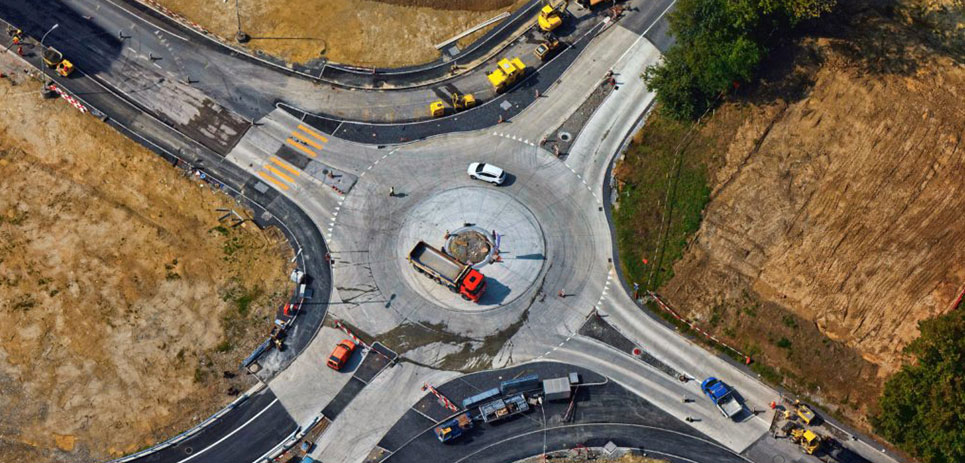Insight
Published and updated
How to Keep Your Construction Drone Operator Safe
Using a construction drone at your jobsite? You’re not alone. The quadcopter camera setup is now commonplace on large projects. But copters are evolving into full-fledged big iron drones, from autonomous impact protection vehicles to radio remote crane operation. One possible future sees many heavy equipment operators driving from outside of the vehicle’s cab.
The growing popularity of the construction drone can be linked to increases in productivity and safety. Productivity boosts come from more comprehensive site surveys from aerial angles previously available only from a crane or manned helicopter. It takes much less time to fly a drone around the roof than to have a team walk or climb around the roof to inspect work progress, safety or site traffic flow.
Construction drone safety benefits
The safety benefits are multi-layered. First, the survey results of photos, video or cloud software analytics provide instant feedback about jobsite stability, security and preparation. Second, sending an unmanned drone into the sky, underground or into a hazardous area eliminates the need to place human workers in potentially unsafe situations. Third, the Federal Aviation Administration (FAA) is getting more involved in protecting all of us from increased air traffic. Fourth, the drone operator is responsible for keeping the unmanned vehicle and its camera cargo safe during use. But who or what’s protecting the central cog in the construction drone system, the operator?

Construction drone operators are completely vulnerable while they work. Experienced operators see the drone as an extension of their vision. While flying, their intense concentration on visual feedback from the monitor and audio feedback from spotters and other ground crew personnel puts them at risk on a busy jobsite or in a chaotic work zone.
Protecting construction drone operators
Team communication during remote control or construction drone operations is critical to mission success and safety. Whether you’re a construction company with a trained internal construction drone team or a commercial drone service provider that specializes in construction surveys, equipping your drone survey team with construction wireless headsets can help:
- Protect the construction drone operator. Connect the drone operator with the rest of the team on a full-duplex communication channel. That way spotters, ground crew, drivers, and other workers can alert the operator of potential danger, confident that the transmission won’t be blocked out by cross-chatter or button mashing. The added benefit of active hearing protection is also an advantage in high-noise environments.
- Adhere to FAA rules. Even if the spotter is beyond the operator’s line of sight, they can still maintain clear audio contact. The spotter can also alert the operator if they lose sight of the drone. Also, if there’s ever a concern that the drone is higher than 400 feet, beyond 400 feet away from a structure, or flying more than 100 mph, then the team can quickly coordinate to correct course or speed.
- Free up the hands of the construction drone operator. While construction drone operation is getting easier, it usually still requires two hands. Some military drones are tuned for single-hand operation, but they cost tens of thousands of dollars and aren’t available to the public yet. Construction wireless headsets allow the operator to communicate with the team without the need to push any buttons. The operator just talks and flies.
- Maintain situational awareness. To help operators feel less vulnerable on a jobsite—and to allow them to hear other team members who might not be wearing a headset—stereo listen-through technology gives them control over how much ambient noise they need (or want) to hear.
Now, I hate to lean on hyperbole (yeah, right…), but the survival of the human species may just come down to protecting construction drone operators. According to Elon Musk, evolving to full artificial intelligence (AI) may lead to a “Terminator” scenario where the machines decide they’re better off without us. So let’s keep the people at the controls safe!